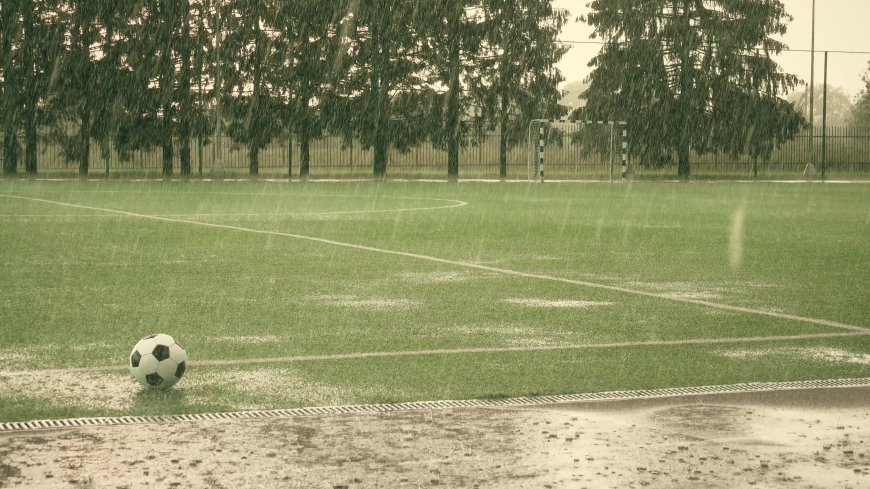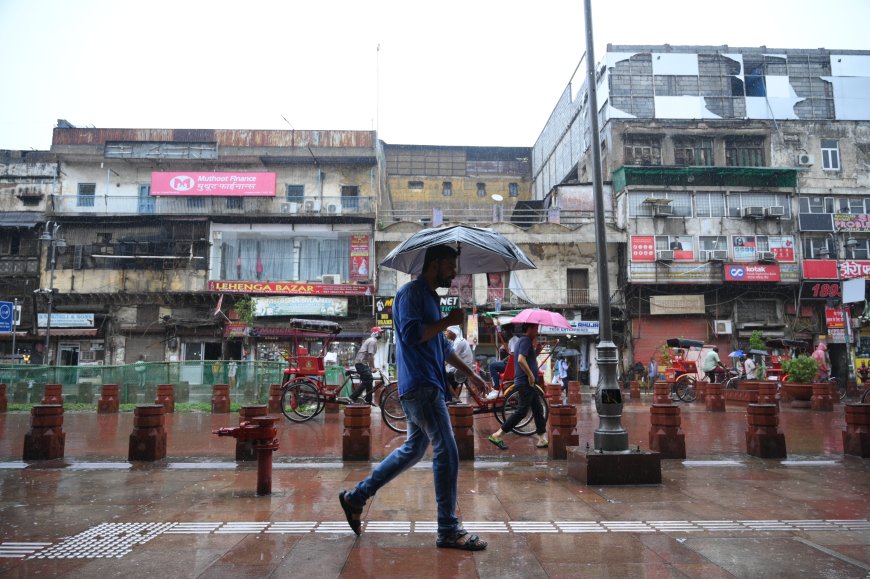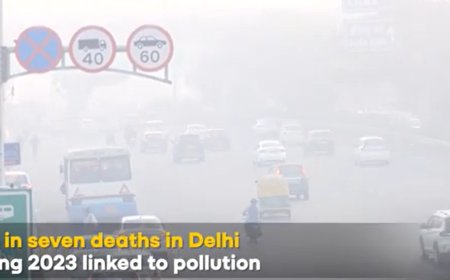Delhi's Artificial Rain Project: Big Bang or a Bust?
Delhi plans to use artificial rain to tackle worsening air pollution. Experts weigh in on how effective this cloud seeding experiment could be in reducing the city’s toxic smog.

Have you ever glanced at the sky during the worst pollution season in Delhi and wished for a heavy, clear rain? It is sometimes as if the only way to eliminate the dense, grey smog is through a magic spell. However, the government, along with scientists from IIT Kanpur, decided to experiment with what sounds like magic: artificial rain!
Delhi started in 2025 a new experiment for the purpose of rain-making. The air that is full of toxins and makes breathing difficult was targeted as the one to be cleared. But what was the result? Did it turn out to be a "Big Bang" success that changed everything or just a "Bust"—an expensive, wasted attempt? Let us explore the remarkable realm of cloud seeding and see.
What is Artificial Rain, Anyway?
To discuss Delhi's results, first, let's get a hold of the cool science behind it.
So, what is artificial rain? It doesn’t mean taking rain from a completely clear sky. It is a method called cloud seeding. Imagine clouds as enormous sacks of very small water droplets and ice crystals that are floating very high up. Although they contain a considerable amount of water, they sometimes require a little push to become rain.
The artificial rain technique is the one that gives them that push.
The Magic Ingredient: Cloud Seeding
In order to make the artificial rain process work, scientists will fly a specific plane into the type of clouds that are suitable for this purpose. After that, they will inhale tiny, tiny particles into the cloud like a cloud of fairy dust.
The most used “dust” is either a chemical called silver iodide or occasionally just plain salt (sodium chloride).
How is it done?
The particles behave like a magnet. The very small water droplets that are present in the cloud are rushing to cling to these new particles. They are coming together and becoming heavier and heavier.
The end product
Droplets that are too heavy for the cloud to retain come to the ground as a marvelous shower! This is the center of the artificial rain method.
The reason for the people's enthusiasm in the case of New Delhi, which is a city notorious for its pollution, is pretty obvious! A storm might wash away some of the pollutants, such as dust and smoke, and thus, clean the air to some degree.

Why The Great Delhi Experiment Was A Trial of Hope
The proposal of making artificial rain in Delhi arose from a hopeless need to purify the atmosphere, particularly after the Diwali festival, when the pollution levels tend to rise dramatically.
The Plan and The Reality
The collaboration between the Delhi government and the IIT Kanpur scientists was quite a significant milestone. A specialized aircraft was on standby, and they were ready to conduct multiple cloud seeding trials.
The Plan
Release the chemicals into the clouds overhead in areas like Burari and Mayur Vihar to make it rain and hence lower the AQI.
The Reality
Their efforts were met with partial success. The experts ruled out the plane and the chemicals as the causes and pointed to the sky instead.
For successful cloud seeding, the clouds need to have enough moisture, like being at least half-full of water. During the winter smog, the moisture in the Delhi clouds was simply too low, sometimes around 10-15% when they really needed about 50%.
The Outcome
The trials didn't bring any significant rainfall directly over Delhi. A very minimal drizzle was reported in nearby areas like Noida, but the "Big Bang" rain everyone hoped for just didn't happen.
This is why many experts called the project a bust and an "expensive, temporary, and unsustainable measure." The total cost for the trials was in the crores of rupees, and for no real rain!
Where Else in the World Has It Worked?
The debate over artificial rain in India isn't new. Cloud seeding has been used all over the world, often for different reasons than fighting pollution. These examples help us judge the future of artificial rain in Delhi.
China's Olympics Clean-Up (2008)
China holds the title of having the biggest weather control program in the world. Their most notorious case of making it rain days prior to the Olympics was cloud seeding at the time of the opening ceremony. The intention was not to have rain during the event, but to "clear the air" and let the sun shine for the athletes!
USA's Snowpack
In places like California and Colorado in the USA, cloud seeding is regularly used over mountains. The goal is to increase snowfall (the artificial rain process works on snow, too!). The above-average snowfall eventually disappears in the spring, and the reservoirs are filled up, thus water is made available for human consumption and agriculture.
Drought Relief Measures in India
Far before the pollution control program in Delhi, the Indian states of Maharashtra and Karnataka had already started cloud seeding operations to induce precipitation in drought years. The primary focus of these activities is to support agriculture and to guarantee the availability of water.
These success stories show that artificial rain making is a powerful tool when the conditions are right—especially when there is enough moisture in the clouds to begin with.
Is Artificial Rain Harmful?
A very important question to ask is: Is artificial rain harmful? Whenever we talk about changing the weather with chemicals, it’s natural to worry.
The Safety Debate
The chemicals employed are said to be in tiny quantities by the proponents of cloud seeding, among them the director of IIT Kanpur. They went on to elaborate that the silver iodide usage is even less than 1 kg and that it is dispersed over a large area of 100 sq km. They claim that this tiny quantity can never produce any negative effects on people, animals, or nature. Water is supposed to soak up the silver iodide very fast and make it into a harmless substance.
However, others have concerns. Environmentalists worry about the long-term effects:
Chemical Buildup
If you keep doing cloud seeding year after year, will the silver iodide slowly build up in the soil and water? Could that hurt crops or the fish in the rivers?
Unfair Weather
If Delhi successfully makes it rain, where does that water come from? Some experts worry that making it rain in one place might mean less rain for another place nearby, like a farmer's field outside the city.
For now, the general scientific consensus is that the chemicals used in cloud seeding are not harmful in the tiny amounts used. But more research is always needed!

Big Bang or Bust? The Final Verdict
So, back to our main question: Was Delhi’s Artificial Rain Project a Big Bang or a Bust?
Looking at the results, it seems it was a bit of neither, but mostly a partial bust.
Why it wasn't a Big Bang
It failed to produce the heavy rain needed to clear the smog significantly, mainly because the winter clouds lacked enough moisture.
Why it wasn't a total Bust
The trials proved that the technology could be used in Delhi's airspace, and the scientists gathered important data for future attempts.
The biggest lesson from the Delhi experiment is that artificial rain is an SOS (Save Our Soul) measure. It's a temporary fix, like putting a Band-Aid on a big wound. It doesn't solve the real problem: all the pollution from cars, factories, and burning crops.
For a true "Big Bang" solution, we need to focus on stopping the pollution at its source, all year round.
Your Turn to Think!
Now that you know how artificial rain in India works, what do you think? Should the government spend money on more cloud seeding experiments? Or should that money go toward better public transport, helping farmers stop burning crops, or inventing cleaner factory technologies?
The future of Delhi's air quality is still up in the air - and it's a problem we must solve!
What's Your Reaction?
 Like
0
Like
0
 Dislike
0
Dislike
0
 Love
0
Love
0
 Funny
0
Funny
0
 Angry
0
Angry
0
 Sad
0
Sad
0
 Wow
0
Wow
0


























































































































































































